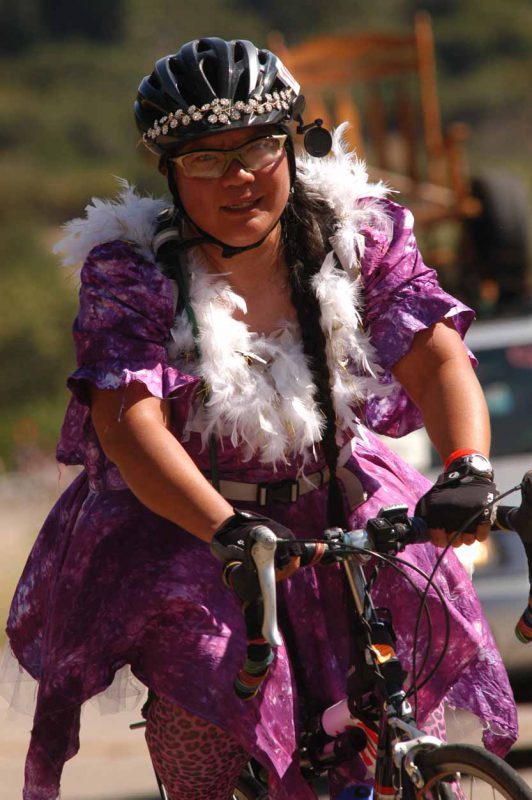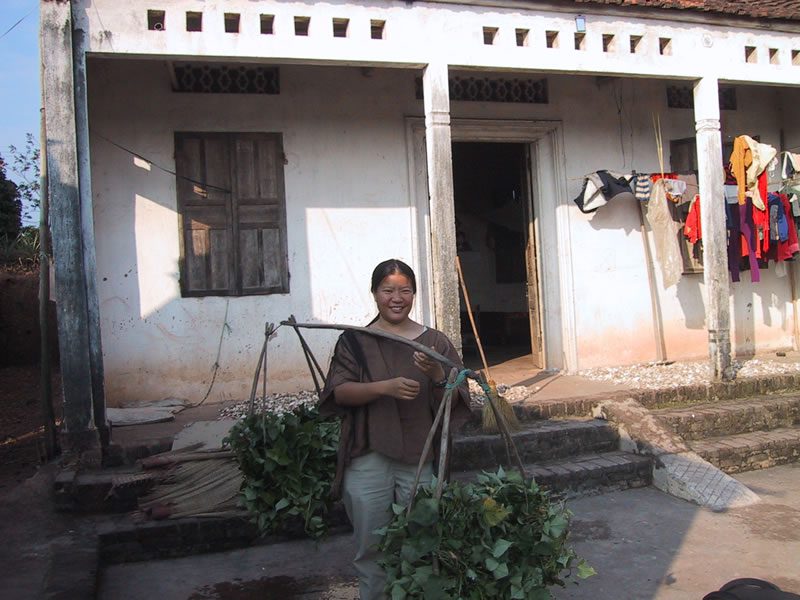It’s been a while, but here’s an update!
Two big things have happened recently: I’m back to weaving AND to tomato breeding!
I’ve been weaving on Grace (one of my two TC-2 jacquard looms), on a warp that’s set up for color samples. I spent a long time a few years ago agonizing over exactly what color combinations to put together for which samples – and never actually got around to weaving any of the samples. And I’ve long since forgotten what colors I dyed. (I suppose I could go look it up, but where’s the fun in that? 🙂 ) So now I’ve got probably about 15-17 yards of warp left, with a surprise color change every 1.5-3 yards. It’s a double weave warp – one layer is solid color and the other layer is divided into three sections, each a different color.
I plan to weave color samples with whatever colors happen to be on the loom when I need the sample. That probably sounds weird, but since I can use many different colors to illustrate color mixing principles, I think it will work pretty well.
I chose double weave because it allows me to play with two-color stripe patterns easily (jacquard magic!). But recently I’ve just been weaving with solid warp colors, in two separate layers. Like this:

The top and bottom layers are weaving different patterns, but they’re all illustrating a principle of color blending: the smaller the patches of color in your fabric, the more color blending you get.
In this swatch, the same colors are used, but the size of each color block increases left to right and top to bottom. As the patches of color get bigger, they blend together less and less.
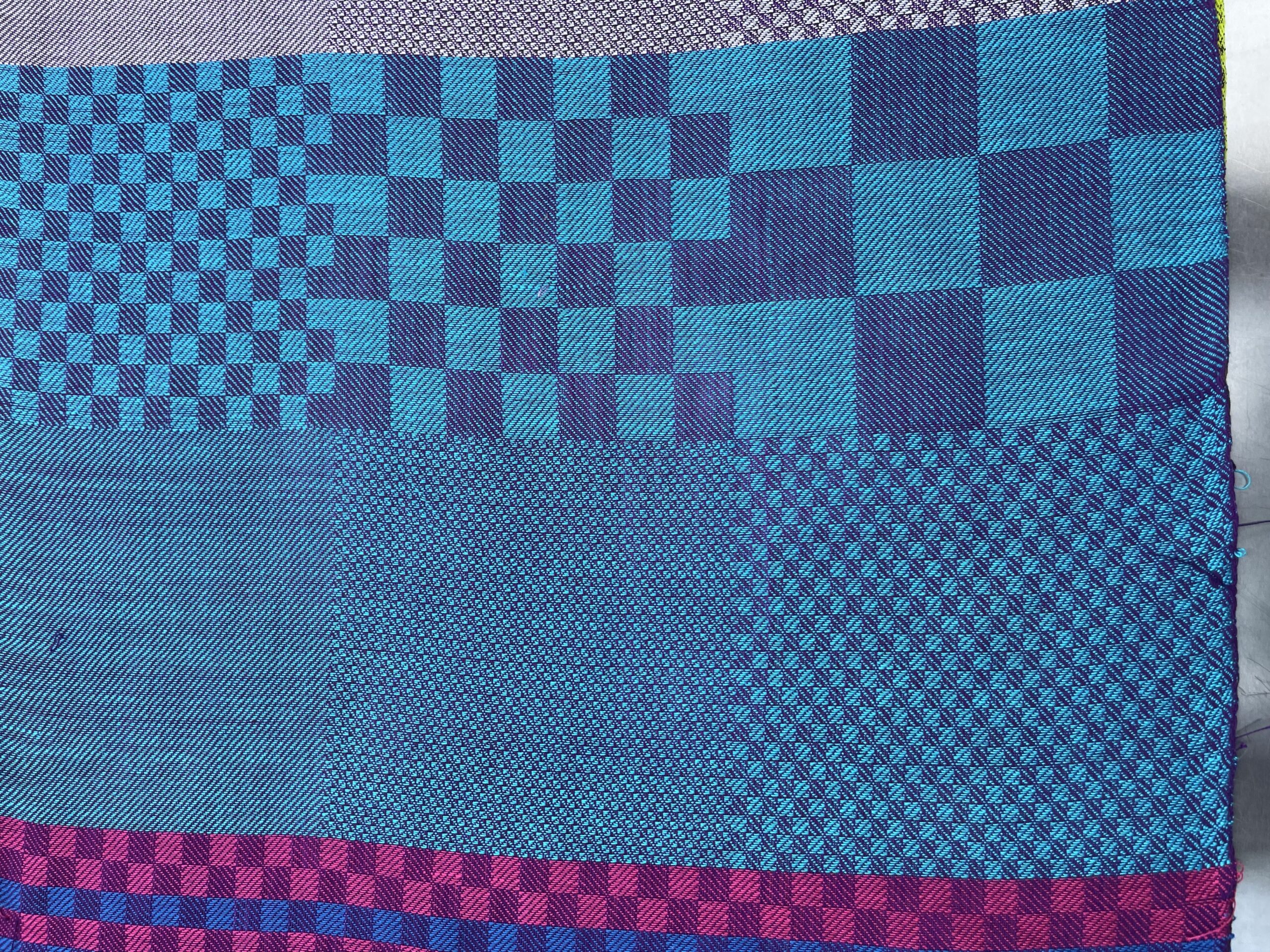
And here is another set of samples, that explore the effects of color choices in the same patterning.
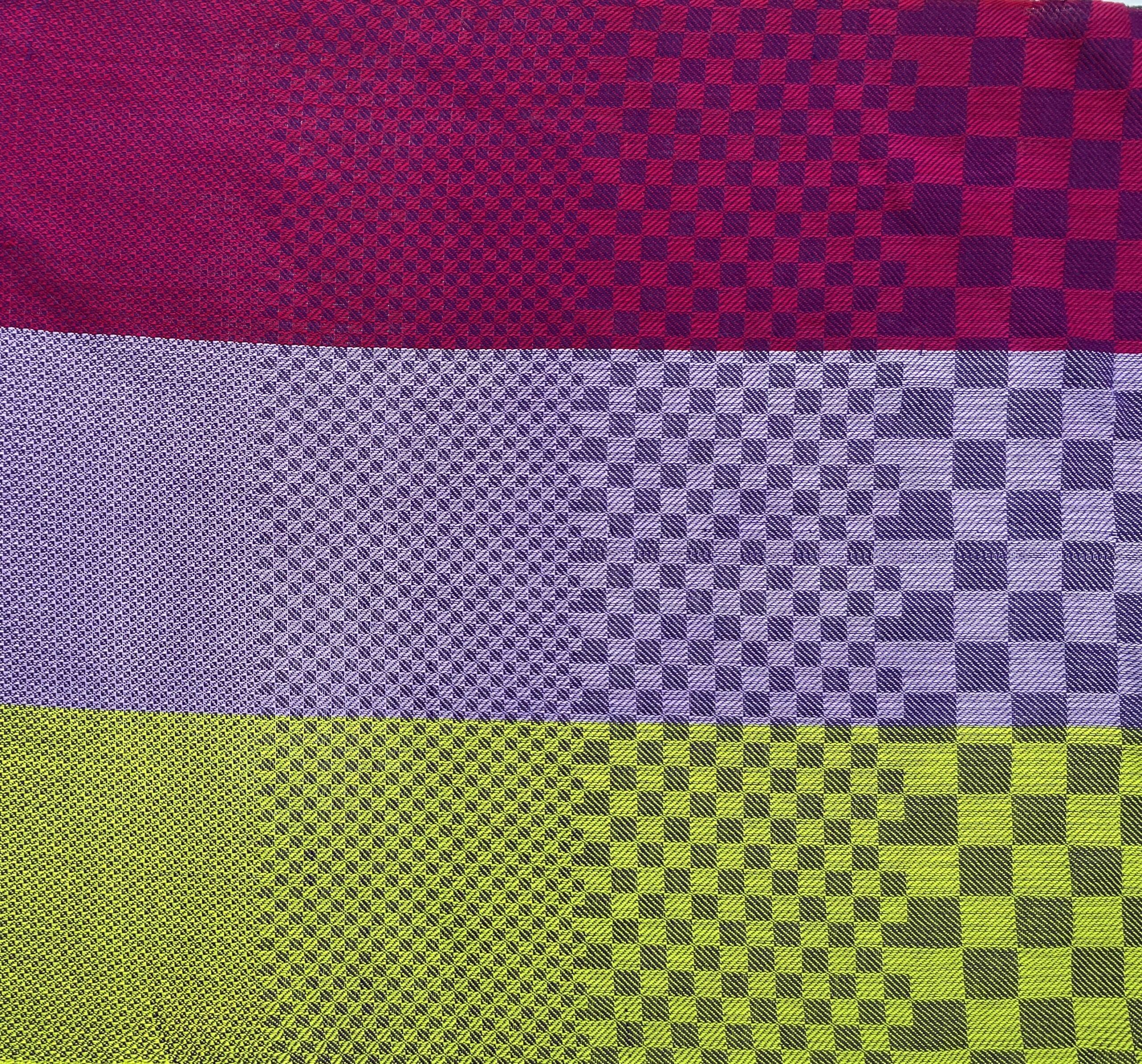
Why am I weaving these on a jacquard loom when all of these samples could be woven on just 8 shafts?
It’s because the jacquard can pivot from one structure to another in the blink of an eye. So I save a LOT of time because I don’t have to put on a new warp, or rethread an existing warp, every time I want to weave a different pattern. That allows me to weave a wide array of samples on just one warp, with no rethreading. Whee!
It is nice to be weaving again; it’s been a really long hiatus.
The other thing I’ve started working on again, after a similarly long hiatus, is tomato breeding. I rescued two nearly-lost varieties bred by Tim Peters: Fruity Fix and Fuzzy Mix. Fruity Mix, which has fabulous flavor, was relatively easy to stabilize and reintroduce, via Wild Boar Farms, where it’s available as Tim’s Taste of Paradise.
But Fuzzy Mix hasn’t been perfected, and it’s a much harder “sell” because it isn’t releasable in its current form. It is fascinatingly furry, compact, heavy-bearing, and pretty drought-resistant – all good. However, the fruit tastes like diluted battery acid!
Here’s a pic of Fuzzy Mix that I took this morning. There’s a “normal” tomato plant in the top right, and two Fuzzy Mix plants, one in the center and one in bottom center.
Fuzzy not only has very woolly leaves, but it has very thick, leathery leaves, making it quite drought-resistant. A few years ago I left the area for ten days and the gardener turned off the water to my tomato pots; I returned to find the regular tomatoes dramatically wilted, and Fuzzy Mix fat, happy, and totally unbothered. This seems like an excellent trait for a tomato (especially these days with drought everywhere), and I’d like to get other people working with its genes.
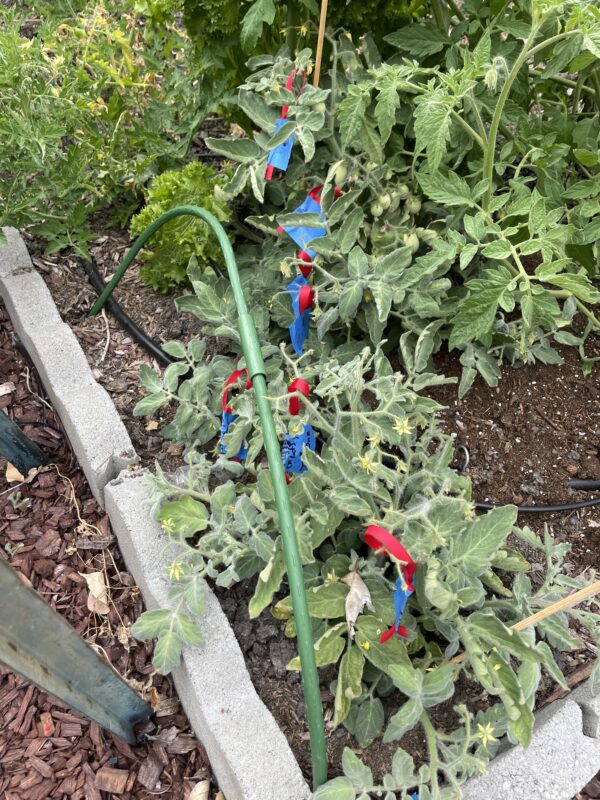
You’re probably wondering about the red ribbons and the blue tape. These are my tomato crosses. To cross-breed tomatoes, you find a flower that’s about to open, and cut off everything except the stigma (female part of the flower). Then you collect some pollen from the male parent, by putting a piece of plastic or glass under a mature flower and then vibrating the flower stalk with an electric toothbrush (!) to shake out the pollen.
After you have the pollen and the bare stigma, you simply drag the stigma through the pollen to cross-pollinate it. Do this for a few days to make sure the cross “took,” and voila! You are on your way to a new tomato variety.
Of course, you need to document your crosses, so that’s what the ribbon and blue-tape labels are for.
Since Fruity Mix (which is the variety I rescued and arranged to reintroduce) is the best-flavored tomato I know, and since I’m also quite sentimental about its history, I’m breeding it to Fuzzy Mix in an attempt to get a good-tasting AND fuzzy/drought resistant tomato. I’m also trying a cross with The One, which is a variety that William Schlegel is developing out of some varieties in the Open Source Seed Initiative.
My other “project” is getting other breeders interested in Fuzzy Mix. As I mentioned earlier, it has a lot of characteristics that might be useful in a tomato plant, especially as climate change continues. Drought resistance, yes, but furry tomato plants often have better pest resistance too (the fuzz can deter insects). And because Tim Peters bred Fuzzy Mix out of a bunch of wild varieties, there may be genes for disease resistance coming along for the ride. So it has a lot of potential.
I’m currently one of only a handful of people with seeds for Fuzzy, so I really want to interest other people in it so it doesn’t get lost again. (If you – or anyone else you know – want to try breeding with it, email me!)
But in the interim, I’m going to do some breeding work myself. This year I’m just cross-pollinating things, but next year I’ll likely plant one bed entirely to the (probably inedible) Fuzzy Mix crosses. I’ll grow a few tomatoes for eating fresh, but I’ll focus on my tomato breeding work next year, I think.
The fun part is that tomato breeding really doesn’t take that much time (if you’re already planning to grow tomatoes, that is). I spent about an hour this morning cross-pollinating a bunch of flowers, and that’s very likely all the breeding work I’m going to need to do this year. Next year I’ll probably grow out 16-20 plants from the cross-bred fruits, selecting for fuzziness initially, and then flavor.
20 tomato plants sounds like a lot, but it’s really not a ton when you consider all the genetic diversity available! If I had double the gardening space I could do a lot more work with them. (On the other hand, let’s face it – if I had double the gardening space I’d just start working with more breeding projects!)
Oh, and the powerlifting?
Here’s me setting a new one-rep max on bench press: 70 kg! That’s 154 pounds (616 weasels), which is 20 lbs more than I could do last year.
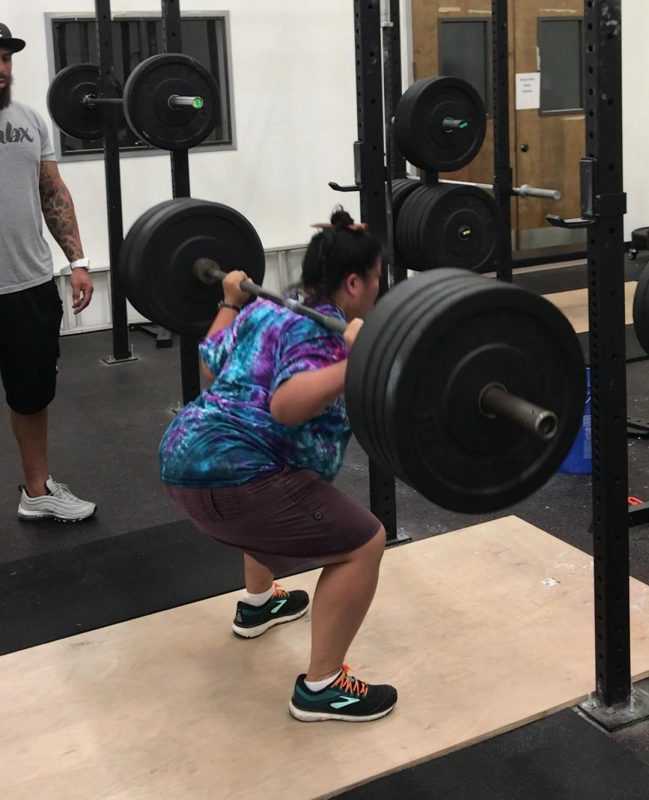

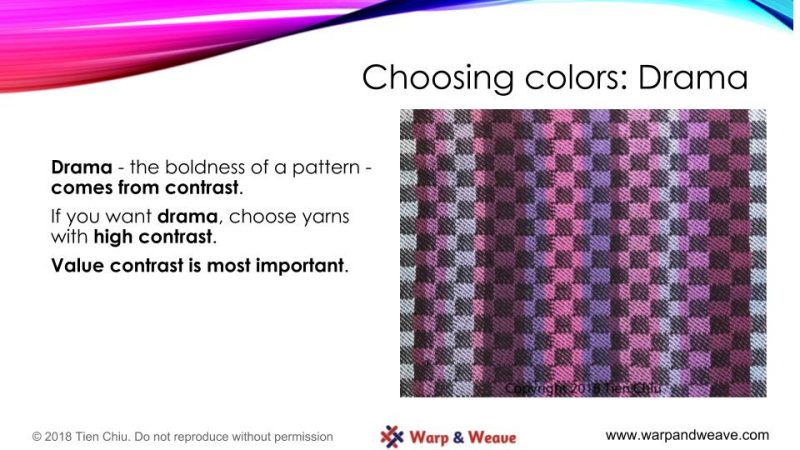
![By Keven Law (originally posted to Flickr as On the lookout...) [CC BY-SA 2.0 (https://creativecommons.org/licenses/by-sa/2.0)], via Wikimedia Commons](https://tienchiu.com/wp-content/uploads/2018/07/least_weasel-400x342.jpg)
![By Keven Law (originally posted to Flickr as On the lookout...) [CC BY-SA 2.0 (https://creativecommons.org/licenses/by-sa/2.0)], via Wikimedia Commons](https://tienchiu.com/wp-content/uploads/2018/07/least_weasel-800x684.jpg)
